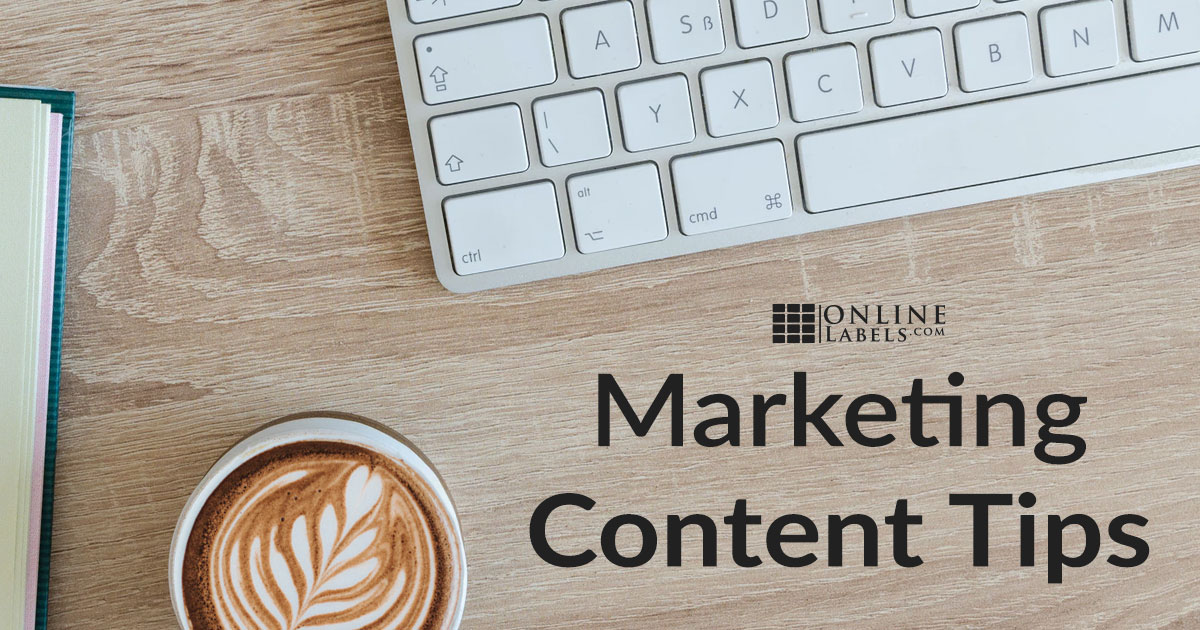How to Write Catchy Marketing Copy
 Good content is essential to marketing success. If you're a maker, not a writer, what do you need to know to write content that sells? While copywriting is a dedicated profession, you don't need to be a copywriter to help your product or business shine. Below, we define marketing copy and delve into the "need to knows."
Good content is essential to marketing success. If you're a maker, not a writer, what do you need to know to write content that sells? While copywriting is a dedicated profession, you don't need to be a copywriter to help your product or business shine. Below, we define marketing copy and delve into the "need to knows."
What is marketing copy?
"Copy" is an advertising/marketing term that refers to anything written with the intent of attracting customers. Copywriters write the words for many of the following items:
- Ads
- Product names, descriptions, and packaging
- Blogs
- Website content and landing pages
- Email newsletters and campaigns
- Help centre articles
- eBooks
- Social media posts
- Infographics
- Case studies
Need-to-Know #1: Make It Short
"Overwriting is a symptom of under thinking." - Kelton Reid
The number one tip for writing copy: don't write too much. One of the biggest mistakes in writing is to add "fluff words." Copy should be succinct and to the point. With our ever-shrinking attention spans, customers want the information they need quickly. Don't surround your core selling points in an attempt to fill space, explain a complex idea, or look official. Here are three practical guidelines to keep your copy short:
A. Split copy into smaller chunks.
Without changing a single word, your copy can look and feel substantially shorter when longer paragraphs are broken into shorter ones. Consider this effect on something as simple as an email. A 6-sentence email looks like a wall of text, but splitting it into 3 paragraphs of 3 sentences can make it appear less daunting.
B. Quit trying to sound smart.
Overcompensating can lead to overwriting. Your writing will sound more intelligent and professional if you avoid these common pitfalls:
- Hyperbole and exaggeration. Examples: adverbs like "very" and "really."
- Multi-word phrases that can be replaced with one-word. Examples: "In order to" can be replaced with "to," and "Due to the fact that" can be replaced with "Because."
- Fancy words and professional jargon. Examples: "We're in the process of updating our SQL databases..." can be replaced with "We're updating our systems…"
- Revealing your thinking process (known as passive language). Instead of writing about seeing or thinking, write about what was done. Examples: "We've noticed new trends..." or "Our engineers thought…" can be replaced with "Trends show…" or "We built…"
- Thinking sentences need to be long. Aim for an average of 12 words per sentence or approximately one line worth of text. Shorter sentences are easier and more likeable. And so are sentences that start in conjunctions like "And," "But," and "Or."
C. Prune, prune, prune.
Once you've finished your first draft, re-read it and cut out redundant words, phrases, and sentences. Rest assured, we all repeat ourselves. Go through this process twice more.
Need-to-Know #2: Make It Personal
Don't forget that you're writing for people. Readers engage with writing they feel is personal. Always consider how you can add a personal touch to your writing.
A. Write to and for your reader.
It can be tempting to focus on how great your product is but remember it's all about them. What do they need, want, and like? What pain point can you solve? Follow the 80/20 rule: 80% of your content should be interesting and informative for your reader whereas only 20% should be about your product.
B. Write like a human.
When you read your copy aloud, it should sound natural. While formal writing can sound eloquent and professional, consumers will connect with your product more if it feels like a conversation. Let your personality shine through to create that connection.
Need-to-Know #3: Make It Easy
Making your content easy to follow is essential to create an exceptional user experience. Keep a few of the following tricks in mind and make your customers' lives easier.
A. Easy To Read
Utilise a beautiful array of headers, subheaders, images, content, and a call to action. There's a visual hierarchy of text that helps with scannability and consumption. Using headlines and headers in your own writing to help your readers. They're the first thing readers see, don't let them be their last. Your headline should focus on one big idea (ideally the biggest benefit to the reader) and include an informational keyword whereas headers should give a clear idea of each section's content and a clear overview of the entire piece.
B. Easy To Find
If your copy is digital, you'll want to employ some search engine optimisation (SEO) tactics. SEO plays a huge role in how your website ranks in Google, Bing, etc. so the better you rank, the more customers/traffic you'll get. Starter tips for good SEO include:
- Research keywords ahead of time
- Place keywords in your:
- Page titles
- Title tags
- Meta descriptions
- Image tags (called ALT tags)
- Product descriptions
- Content headers
- Maintain your social media presence
- Run ads to boost site traffic
C. Easy To Buy
Tell your customers exactly what to do next. Make it clear what step they should take, and make it easy to do. This includes big buttons, headings with instructions, and more. There are tons of ways to push them through the purchasing funnel, so find what works best for your audience and product/service. Easy next steps include:
- Click here for free shipping
- Sign up for our newsletters
- Fill out a contact form
- Learn more about the product
Get Started
While you're feeling inspired by this article, start your copy by answering these three 3 questions:
- How do your customers benefit from your product?
- What would be the most helpful next steps for your customers after reading your copy?
- What results do you want to see?
Focus on your customers and your copy and business success will flow. Check out more marketing updates you can make during a slow period including beefing up your small business blog or revamping your product labels. Turn to Maestro Label Designer and our pre-designed label templates to get started.
You can also catch more helpful business tips including where to sell your product online, how to maximise your labels' exposure, and product labelling do's and don'ts.


